
-
Find the right food for your petTake this quiz to see which food may be the best for your furry friend.Find the right food for your petTake this quiz to see which food may be the best for your furry friend.Featured products
 Hill's Science Diet Adult Chicken & Beef Entrée Dog Food
Hill's Science Diet Adult Chicken & Beef Entrée Dog FoodChicken & Beef Entrée in a delicious loaf with complete & balanced nutrition to help keep adult dogs active and healthy
Shop Now Adult Large Breed Chicken & Barley Recipe Dog Food
Adult Large Breed Chicken & Barley Recipe Dog FoodSupports healthy joints, lean muscle, and beautiful coat for large breed dogs
Shop Now Adult Chicken & Barley Recipe Dog Food
Adult Chicken & Barley Recipe Dog FoodSupports lean muscle and beautiful coat for adult dogs
Shop NowFeatured products Adult Turkey & Liver Entrée Cat Food
Adult Turkey & Liver Entrée Cat FoodPrecisely balanced nutrition with the delicious taste of minced turkey & liver to help fuel the energy needs of cats during the prime of their life
Shop Now Adult Tender No Corn, Wheat, Soy Chicken & Vegetables Stew Cat FoodShop Now
Adult Tender No Corn, Wheat, Soy Chicken & Vegetables Stew Cat FoodShop Now Senior Vitality Adult 7+ Tuna & Vegetables Stew
Senior Vitality Adult 7+ Tuna & Vegetables StewImproves Everyday Ability to Get Up & Go
Shop Now -
Dog
- Dog Tips & Articles
-
Health Category
- Weight
- Food & Environmental Sensitivities
- Urinary
- Digestive
- Joint
- Kidney
-
Life Stage
- Puppy Nutrition
- Adult Nutrition
- Senior Nutrition
Cat- Cat Tips & Articles
-
Health Category
- Weight
- Skin & Food Sensitivities
- Urinary
- Digestive
- Kidney
-
Life Stage
- Kitten Nutrition
- Adult Nutrition
Featured articles How to Properly Mix Wet & Dry Pet Foods
How to Properly Mix Wet & Dry Pet FoodsAn Orange cat eating from a bowl filled with mixed food
Read More What Is Littermate Syndrome? Pet Adoption Guide
What Is Littermate Syndrome? Pet Adoption GuideLearn more about littermate syndrome in dogs and cats and how to successfully navigate adoption and early socialization processes.
Read More The Science Behind Our Love for Pets
The Science Behind Our Love for PetsLearn the scientific reasons why we have such strong connections with our pets, and what science says about the love between humans and our furry friends.
Read More -


Anyone who’s been around puppies knows that they’re little furballs of energy. Between work, family time, and rest, it might be difficult for you to set aside time to not only train and housebreak your puppy, but make sure he gets the exercise he needs. Remember: an active puppy is a healthy puppy. Keeping yours active is an important building block to his overall health and relationship with you.
Why Exercise is Important
Exercise is not just essential to your dog’s mental and physical well-being, it also helps you form a strong bond that continues throughout his life. Just as regular exercise is important for your health and happiness, the same is true for your puppy.
- Reduces risk of obesity and associated health risks
- Improved cardiovascular health and strengthens muscles
- Frequent, scheduled walks promote housetraining
- Increased ability for your puppy cope with your absences
- Reduced behavioral problems through physical, intellectual, and social stimulation
- Reduced digestive problems and constipation
- Increased agility
- Builds confidence and trust, especially in timid puppies
- Increased socialization with people and other dogs
Destructive Behaviors
A healthy amount of activity can steer your puppy away from problematic behaviors. our puppy will also crave a great deal of activity and chewing, playing and exploring are normal behaviors. Without providing an outlet for this desire to be active, this energy may manifest as destructive behaviors
- Hyperactivity and restlessness at night
- Chewing, digging, or scratching
- Raiding the garbage
- Knocking over furniture or jumping on people
- Predatory behavior
- Rough play and biting
- Excessive barking and whining
How much exercise does a puppy need?
The exact amount of exercise a puppy needs is dependent on a number of different factors but it is important to remember that too much exercise can be just as bad as not enough exercise. Although they are often far more energetic, puppies require shorter periods of exercise than adult dogs. Too much puppy exercise can result in exhaustion and joint damage, especially in larger breeds. Exercise needs vary among breeds, but most dogs can benefit from at least one to two walks per day. According to The People's Dispensary for Sick Animals, a good good starting point is to aim for 5 minutes of exercise, twice a day, for each month of age. For example, 3-month-old puppies should have 15 minutes of exercise twice a day, then 20 minutes twice a day at 4 months, etc). Always pay attention to how your pet handles this amount of exercise and decrease the amount if needed.


Tasty Tips
How to exercise a puppy
Even if you have a big yard for your puppy to run around in, he needs more than that to burn excess energy. Short walks and jogs are healthy activities for both you and your puppy. Structured games like fetch and tug-of-war can also help strengthen the bond between you and your puppy, as well as teach him self-control. When your puppy is home alone, keep him occupied with chew toys and food-stuffed puzzle toys.
Avoid forced exercise, which can lead to injury and a lifetime of health problems for your puppy. Forced exercise can include excessive running, bicycling or skating with a leashed dog, excessive fetching, and fast-paced, long walks.
Related products
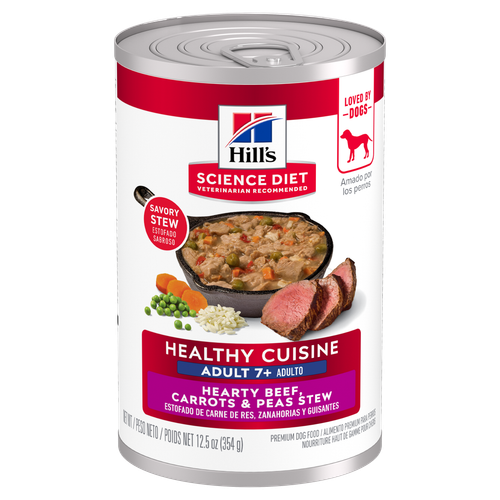
Hearty beef paired with tender vegetables in a savory stew
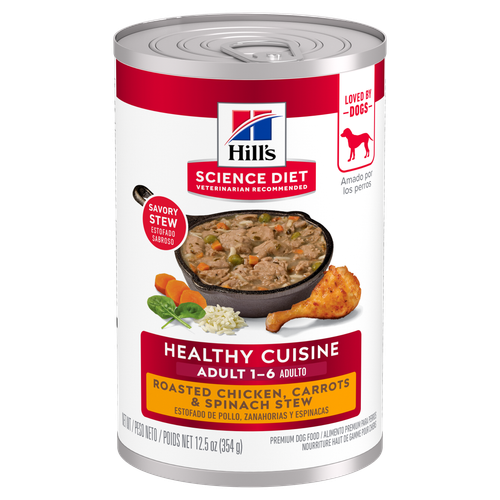
Delicious roasted chicken paired with tender vegetables in a succulent stew
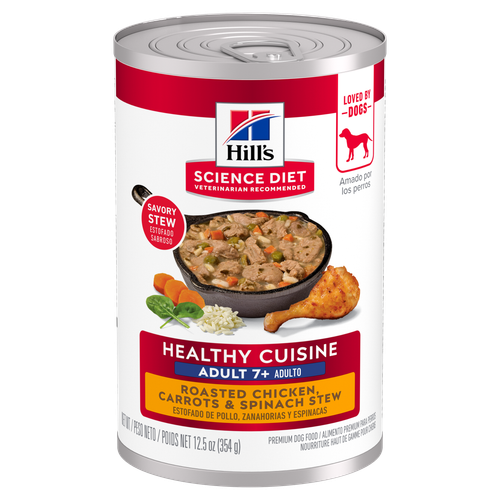
Delicious roasted chicken paired with tender vegetables in a succulent stew
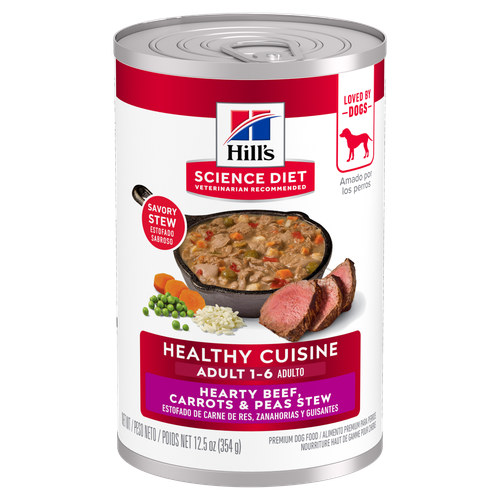
Hearty beef paired with tender vegetables in a savory stew
Related articles

Discover how the field of dog science is giving us more and more insights into the inner workings of our furry best friends.

Learn how to help keep your dog's immune system in tip-top shape, including nutritional immune system support for dogs and other strategies.

Wondering where can I buy a dog? Consider adoption and explore the pros and cons of adopting a dog from a breeder versus an animal shelter.
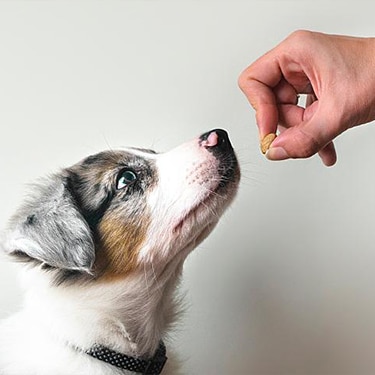
Can puppies have treats? Explore best practices for giving your puppy treats to ensure you're doing so in the healthiest way possible.

Put your dog on a diet without them knowing
Our low calorie formula helps you control your dog's weight. It's packed with high-quality protein for building lean muscles, and made with purposeful ingredients for a flavorful, nutritious meal. Clinically proven antioxidants, Vitamin C+E, help promote a healthy immune system.
Put your dog on a diet without them knowing
Our low calorie formula helps you control your dog's weight. It's packed with high-quality protein for building lean muscles, and made with purposeful ingredients for a flavorful, nutritious meal. Clinically proven antioxidants, Vitamin C+E, help promote a healthy immune system.


